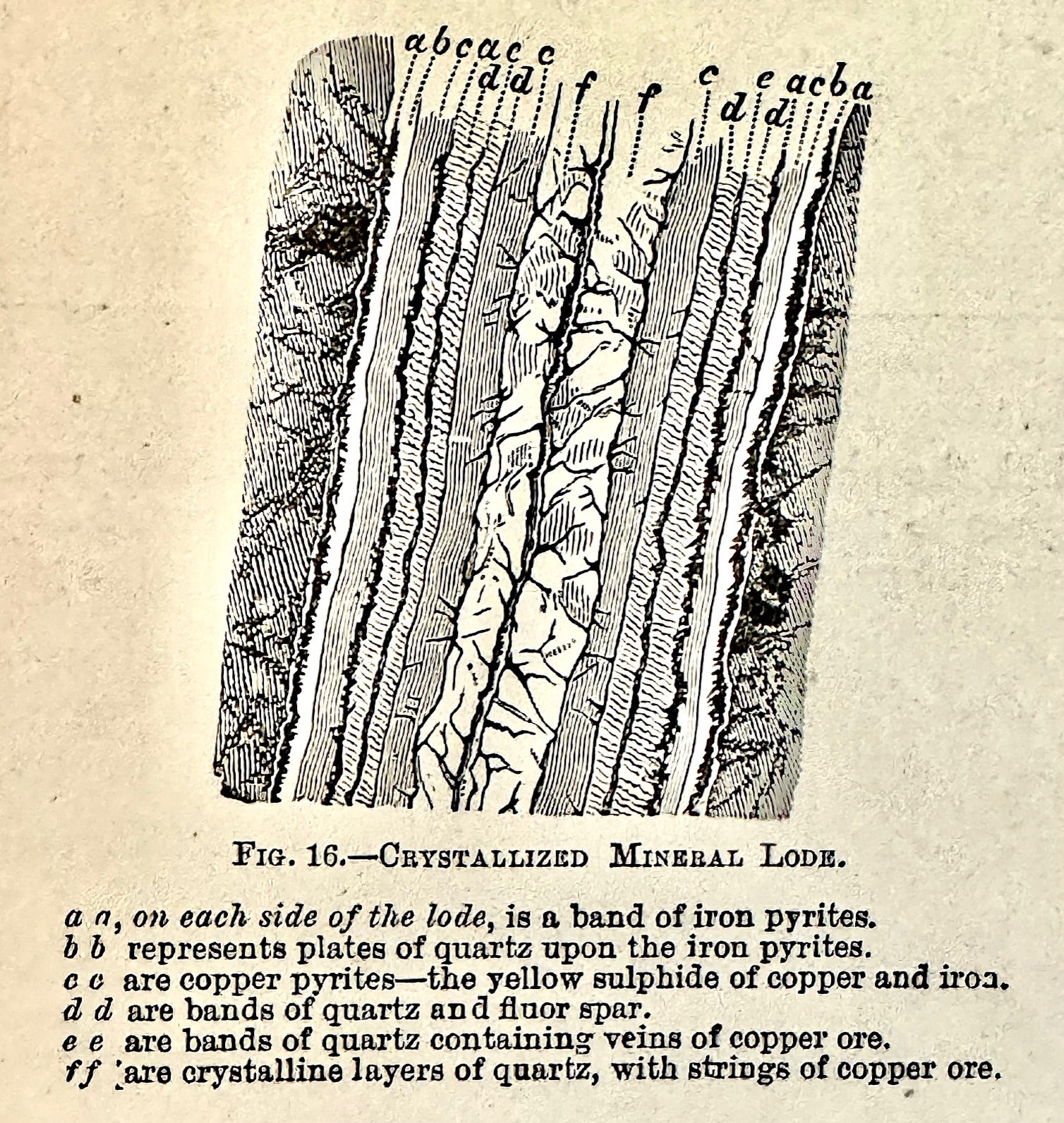
The Prospectors Handbook: Conditions Where Gold Is Usually Found (Part 2)
Gold Geology 101
Not only are rocks deposited by the agency of water in the form of strata, but their beds are also made up of thin leaves which are sometimes unevenly laminated.
Some rock bed stratification is horizontal, sometimes dipped, bent or strained into curves.

The erosion of rocks can come from wind, rain, running water, sea, frozen water, and sometimes the water acts chemically and rots the rock.
For more on the the positioning of stratified rocks see this table:

Valuable Minerals and Metal-bearing Deposits of the Earth
Lodes The ordinary fissure vein running through various strata, and the gash vein, though wide at the surface, pinching out.
Beds of ore, interstratified between other beds. For instance, coal, iron ore (especially in the Oolite formation), copper ore in shale, silver and lead ore in sandstone. Deposits irregularly stratified. Contact deposits between two formations where the deposit lies on the older one.
Irregular Deposits such as pockets which lie sometimes in formations. Contact deposits, network of veins, and where mineral is diffused through rocks, or in small cracks.
Superficial Deposits such as nearly all the diamond and gold alluvial diggings, and stream tin deposits.
See the Illustration below of the nature of veins in lodes, the gold bearing minerals are scattered throughout in various ways:

In order to identify rocks, it is important to study the external appearance and characteristics. For instance, the form of crystallization, hardness, specific gravity, color, streak, and the form of behavior when exposed to chemicals or heat.
Streak refers to the color of stone when scratched or rubbed on a piece of porcelain.
Refer to the table below for metals with a metallic streak




Specific Gravity of a rock can often be approximated by weighing it in the hand, and comparing it with an equal bulk of some other familiar rock.
To accurately obtain specific gravity of a mineral, a fragment of it should be weighed on a scale dry. Then a glass of water placed on the scale and zeroed out. Tie a small string (dental floss or sewing string works) around the specimen, and submerge it in the water glass, close to the bottom, but not touching anything. Hold it still for an accurate reading.
Divide the number you got on the scale dry by the number you got on the scale wet, that will be much closer to your specific gravity.

